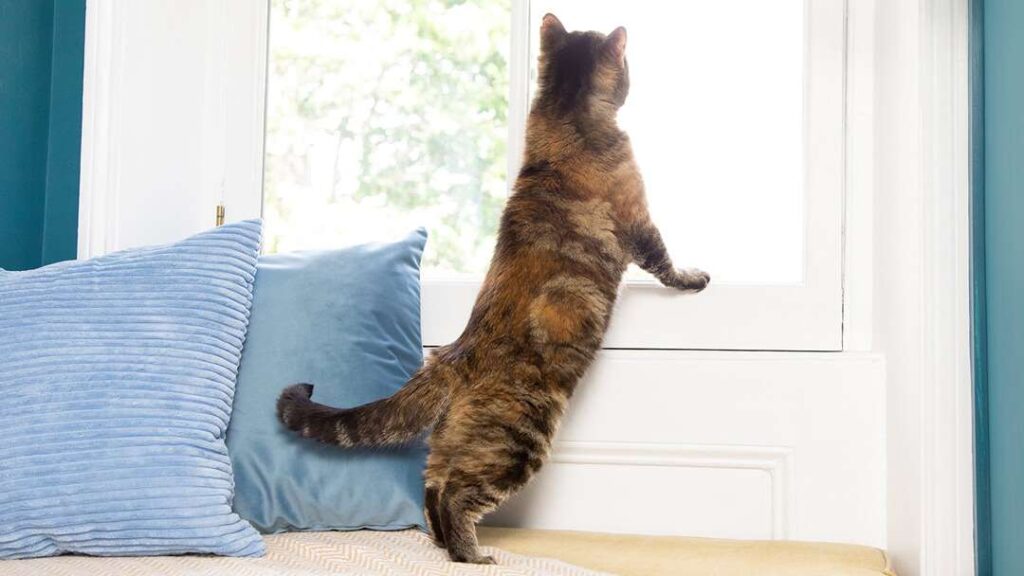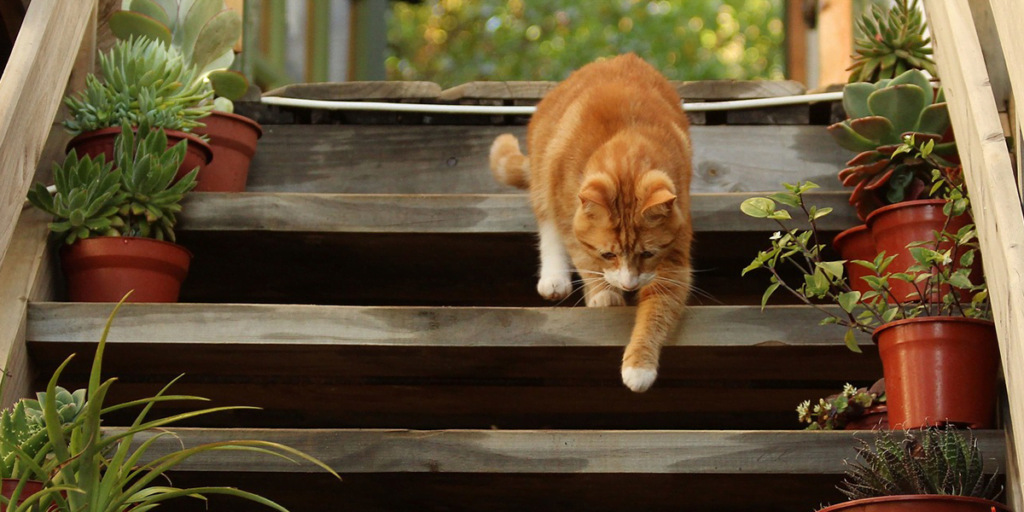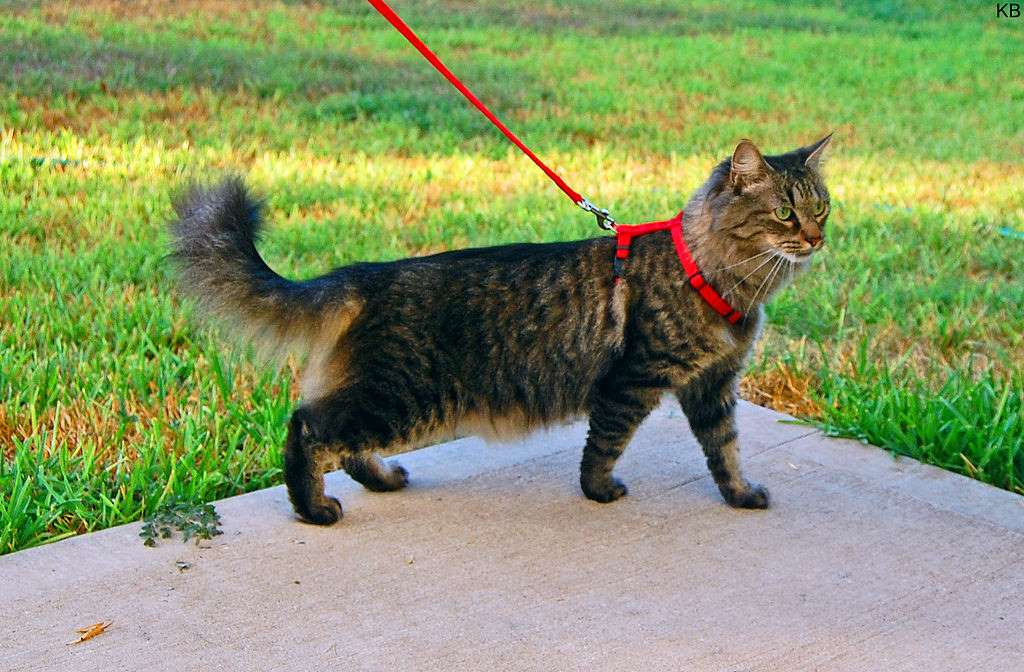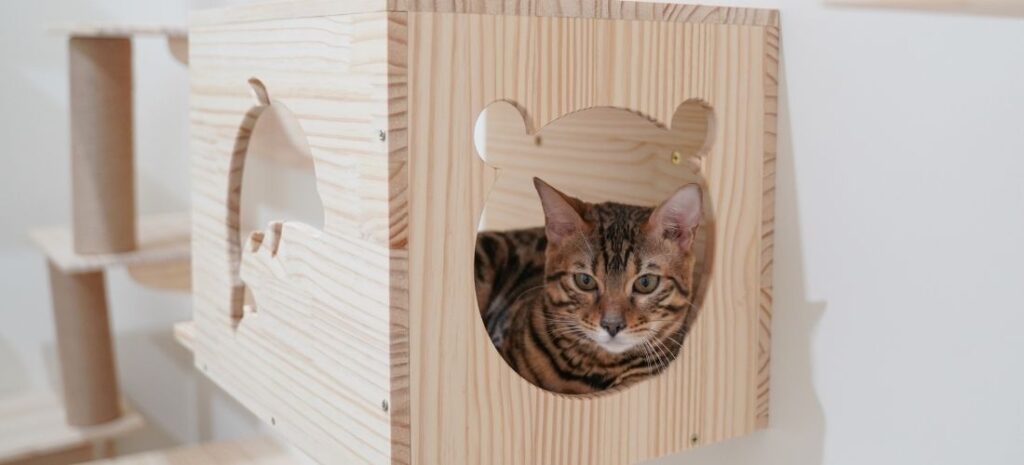How to Train Your Outdoor Cat to Stay Home

Cats are naturally curious creatures and love to explore the great outdoors. However, as a cat owner, it can be stressful to think about your cat wandering off and getting lost (or worse, get into an accident). To ensure your its safety and peace of mind, it is important to train your outdoor cat to stay home.
To ensure the health and safety of your feline buddy, it’s best to keep them indoors. Providing them with a safe and comfortable environment gives them the best possible chance at a long and happy life.
- Benefits of Training Your Outdoor Cat to Stay Home
- Create a Safe and Comfortable Outdoor Space
- Gradually Transitioning Your Outdoor Cat Indoors
- Use a Leash
- Train Your Cat to Come When Called
- Train Your Cat to Avoid Dangerous Situations
- Consult with a Professional
- Provide a Fulfilling Indoor Experience for Your Cat
- Conclusion
Benefits of Training Your Outdoor Cat to Stay Home

There are multiple benefits to training your outdoor cat to stay home. First and foremost, it helps keep your cat safe. Roaming cats can get into dangerous situations. This can include getting hit by a car or getting into fights with other animals. Keeping your cat close to home also helps protect wildlife. It also reduces the risk of your cat spreading diseases to other cats.
Another benefit to train your outdoor cat to stay home is that it can enhance its overall quality of life. Outdoor cats that stay close to home are less likely to experience stress or anxiety. This means they are also more likely to enjoy their time spent outdoors.
While outdoor cats may seem tough and independent, they are vulnerable to many dangers that can cause serious harm or even death. From parasites and diseases to car accidents, theft, predation, and getting lost. The threats to outdoor cats are numerous and can significantly shorten their lives. Additionally, outdoor cats can also pose a threat to local wildlife.
Create a Safe and Comfortable Outdoor Space
Cats are more likely to stay close to home if they have a safe and comfortable outdoor space. This may include a cat house, a cozy bed, or plenty of places to climb and explore. Providing your cat with a safe and comfortable outdoor space will help keep them close to home, even when they’re feeling curious.
Gradually Transitioning Your Outdoor Cat Indoors

Slow and steady is the key to success when transitioning a cat from an outdoor to indoor lifestyle. Some cats may take to the change with ease. Others may resist and show their displeasure through scratching at doors, meowing, or attempting to escape through open doors.
To ensure a smooth transition, it’s essential to prepare beforehand. You can do so, by introducing a scratching post and litter box prior to the move. Additionally, feed your cat indoors and gradually increase the amount of time they spend inside after eating. A warm, cozy bed may be more inviting during the colder months.
To discourage escape attempts, try using a jar of pennies or a squirt of water, but never resort to physical or verbal aggression. Instead, train your cat to move away from open doors by rewarding them with treats.
Don’t let allergies or pregnancy lead you to abandon your cat or leave them outside. Consult with a doctor to find ways to manage these conditions while keeping your furry friend inside.
Use a Leash

If your cat is particularly prone to wandering, using a leash can be a useful tool to train your outdoor cat to stay home. Start by allowing your cat to wear a lightweight leash while they’re outside, and gradually increase the length of the leash as they get used to it. Over time, you may be able to remove the leash entirely, but keeping it available as a backup can be useful in case your cat begins to wander away from home.
Train Your Cat to Come When Called
Training your cat to come when called is a key part of keeping them close to home. Start by using treats or a toy to get your cat’s attention, and then call their name. When your cat comes to you, reward them with a treat or praise. Over time, your cat will learn to come when called, even from a distance.
Train Your Cat to Avoid Dangerous Situations

Outdoor cats are at risk from a variety of dangerous situations, including cars, predators, and toxic substances. To keep your cat safe, it’s important to train them to avoid dangerous situations. This may include teaching your cat to stay away from busy roads, avoiding toxic plants, and being aware of potential predators in your area.
Consult with a Professional
If you’re having difficulty training your outdoor cat to stay close to home, it may be helpful to consult with a professional. A veterinarian or a certified animal behaviorist can help you determine the best training approach for your cat and provide you with additional tips and tricks for keeping your cat close to home.
Provide a Fulfilling Indoor Experience for Your Cat

Revamp your indoor space to provide a fulfilling experience for your cat. Despite being domesticated for thousands of years, cats still have a lot of wild instincts. To satisfy these instincts, you can provide your feline with plenty of opportunities to engage in natural behaviors within your home.
Cats love to play, and their play is rooted in their hunting instincts. So, provide plenty of toys that they can stalk, chase, pounce, and “hunt.” These toys don’t have to be anything elaborate, even a ball of aluminum foil and a paper bag can be exciting for a cat.
Since cats love to observe the world from a high vantage point, consider getting them a cat tree or a climbing structure to satisfy this instinct. You can also place a comfortable bed near a sunny window, allowing them to soak up some sun or watch birds outside.
Make sure the window screen is secure before opening the window. Growing cat grass or providing plants for them to chew on can also keep them entertained. Most importantly, spend quality time with your cat and give them plenty of love and attention.
Conclusion
Training your outdoor cat to stay close to home is an important part of keeping them safe and happy. By using positive reinforcement techniques, limiting access to temptations, and training your cat to come when called and avoid dangerous situations, you can help your cat feel secure and content in their outdoor space.
Additionally, creating a safe and comfortable outdoor environment for your cat will give them a space to play and explore. Most importantly, it will provide them (and you) with a sense of security.
Remember that every cat is unique, so it’s important to be patient and flexible in your approach, and to seek advice from a veterinarian or animal behaviorist if necessary. With the right training, you can help your outdoor cat thrive and enjoy their time outside, while also ensuring their safety and well-being.


